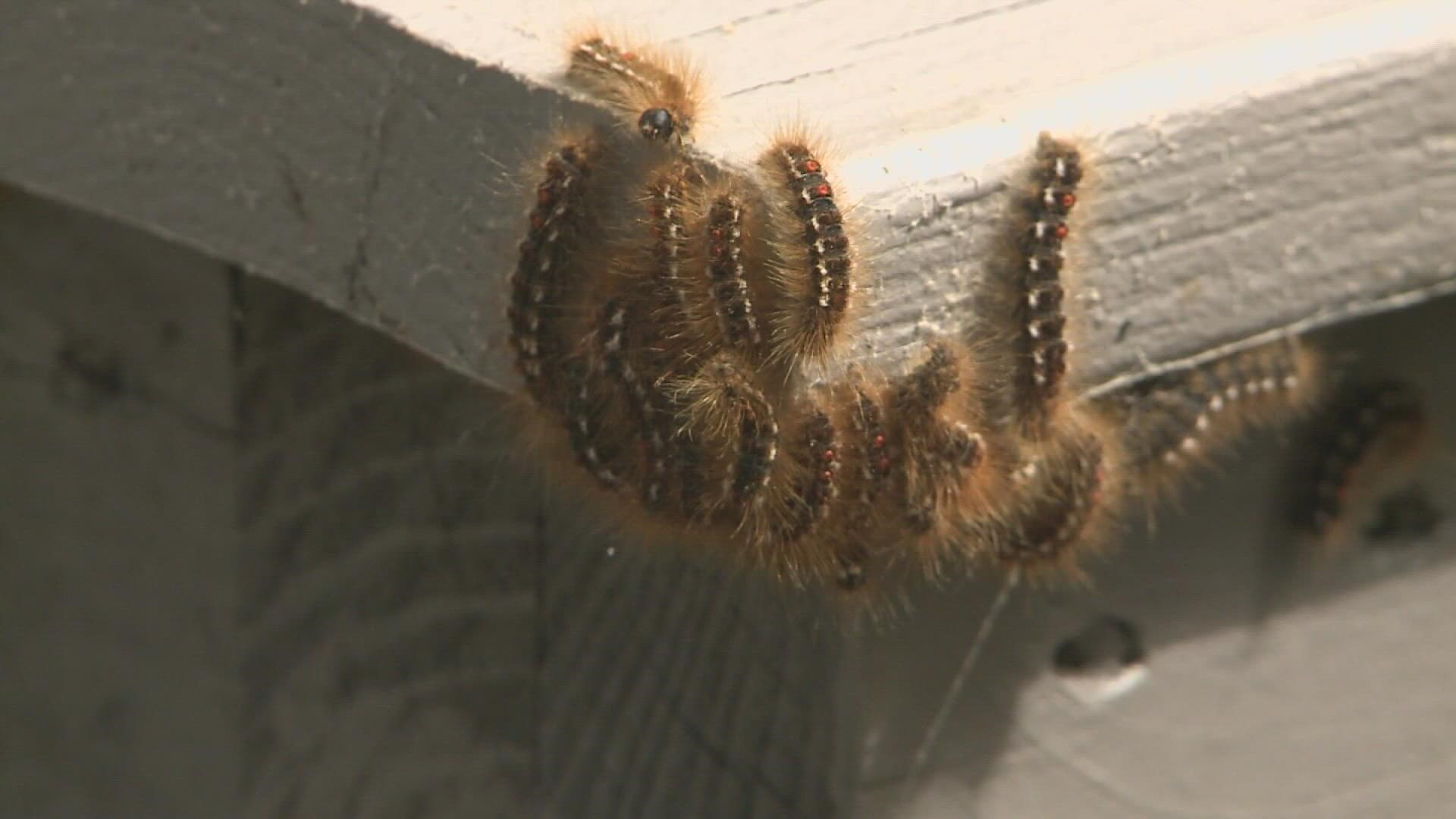PORTLAND, Maine — On the shore of Merrymeeting Bay, where six rivers come together, Ellie Groden looks at the tall oak trees that frame the view in two directions while she talks about browntail moth caterpillars.
"Look to the horizon at the top of the trees," she said. "Wherever there are oaks around here, there is a good density of overwintering webs in the tops of trees."
Groden pointed to the small, brown, curled-up leaves that hang from a number of branches. Each is a web, the shelter for potentially hundreds of tiny browntail moth caterpillars.
When the weather warms in the spring, the insects emerge and begin to devour the leaves. But the caterpillars also produce tiny toxic hairs that cause skin irritation for many people, sometimes severe.
That painful rash is why the browntail moth has become such a major problem in parts of Maine.
Groden, a recently retired professor of entomology at the University of Maine, has been leading a four-year study of the browntail moth caterpillar. That study, done in partnership with the Maine Forest Service, suggests the recent spread of the insect can in part be traced to climate change.
The browntail moth has been in the state since the 1800s, Groden said, but for a number of years had been isolated to a few islands off the midcoast.
Then, in the 1990s, they spread to the mainland. Populations would rise and fall because of varying spring weather conditions, Groden said. A wet spring produces a natural fungus that kills the insect whereas an unusually dry spring can lead to increased spread.
The browntail moth has increasingly expanded its territory in recent years, spreading inland and north to areas where it never before existed.
That's where the climate link comes in, Groden said.
"We see a steady increase, almost turning to an exponential increase in temperatures in August and September," she said.
Other research has showed warmer temperatures have extended Maine's growing season by two to three weeks from what it once was. That same increase is helping the browntail moth, Groden said.
"Late summer, early fall is when the browntail moth eggs hatch, and those early caterpillars are feeding in the trees," Groden said. "I think their robustness and added maturity from warmer temperatures enables them to survive the following spring, when they come out of their webs."
The study shows no climate link to spring conditions that sometimes help spread the moth populations.
"We looked at weather trends in the early 1900s and are not seeing significant trends in spring moisture patterns," she said. "Some years it's dry, some years wet, but no continuing increase in either."
The data suggest that those who want fewer browntail moths should hope for a wet spring, according to Jeff Harriman of the Maine Forest Service.
"Most people don't want to hear 'wet spring,' but that helps with the fungus that kills off the population, so many times we hope for a wet spring," Harriman said.
Winter temperature variations also are not believed to be a factor in the spread. Groden and Harriman both said the caterpillars, packed into their webs of leaves and silk, are protected from cold winter weather.

